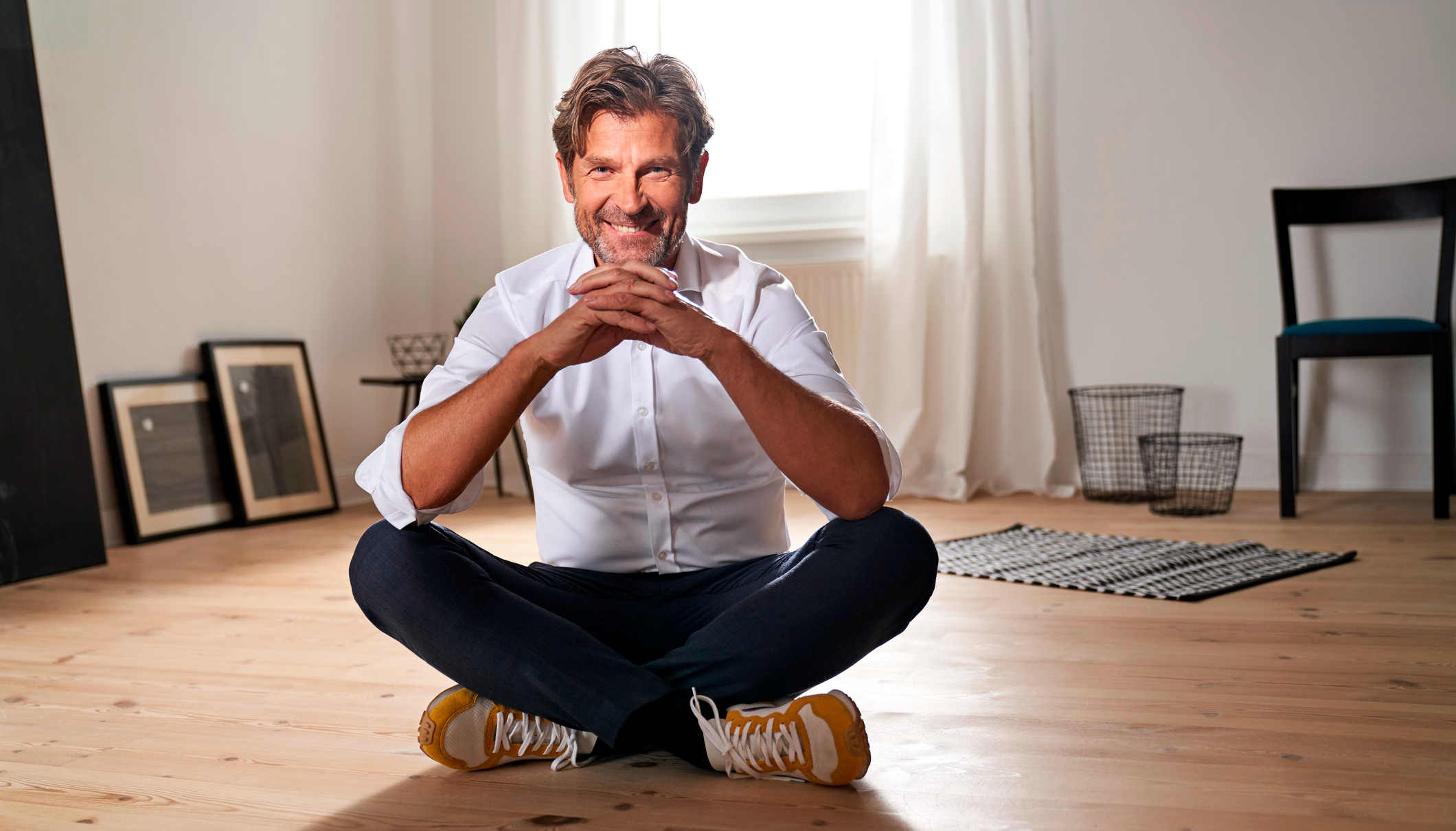
If you lack mobility, you probably notice it in everyday life, as well as when you're exercising. Stiffness in your lower back or struggling to sit into a squat are just a few telltale signs that your joints might lack range of motion.
One way of assessing your mobility, particularly in the hip joints—an area where many people suffer with stiffness — is whether you can comfortably sit on the floor with your legs crossed.
"To sit cross-legged you need to have good hip rotation, as well as lower-back mobility so that you can get on the floor," explains Helen O'Leary, physiotherapist and director of Complete Pilates.
It’s common to lose mobility as you age, particularly if you spend a lot of time sitting down. This means you might notice one day that sitting cross-legged is a lot more difficult than it used to be.
"Some people might never have been able to sit cross-legged," adds O'Leary. "If this is the case, then it might be something that will take you a lot longer to achieve, because it might be down to the structure of your hip socket."
O'Leary has recommended four exercises to strengthen the joints and lengthen the muscles you need to sit cross-legged comfortably. Try doing these little and often. You can also try and do them after a workout or at the end of a long day at work to make you feel more relaxed.
Over time, practicing these exercises should get you to a place where you can sit cross-legged without any discomfort. "In the meantime, try sitting cross-legged on pillows or blocks as this requires you to have less mobility around your hips and pelvis," says O'Leary.
1. Supine glute stretch
- Lie on your back with your knees bent and your feet flat on the floor.
- Lift your right leg and place your right ankle on your left knee, letting your right knee fall to the right-hand side.
- Hold the back of your left thigh and gently pull your knee towards you to feel a stretch in your left hamstring and right glute.
- If you're performing this stretch after activity, try holding the stretch for 30 to 45 seconds each side. If performing it before activity and your body isn't warmed up, move gently into the stretch and then back off again, repeat this 12 to 15 times each side.
Modification: If you struggle with hip mobility doing it in sitting is a great access point as it means you don’t hit your muscular tension as quickly. You can then progress to the floor as your mobility improves.
2. Wide leg side-to-side stretch
- Lie on your back with your knees bent and your feet flat on the floor, wider than hip-width apart.
- Keeping your shoulders on the floor, drop both knees over to one side and then the other, rotating onto the sides of your feet. You should feel the stretch in the front of the hips and lower back.
- Hold the stretch for two breaths then repeat on the other side.
- Try doing this stretch 8 to 10 times each side. You can also hold the stretch for up to four breaths to give you a little more release around the side of your hip and lower back.
3. Deep sumo squat
- Stand with your feet wider than shoulder-width apart.
- Sit your hips back and bend your knees to lower as far as you can, keeping your chest up.
- Pause at the bottom for 30 to 45 seconds and allow your muscles to relax, then return to standing.
4. Pilates saw
- Sit on the floor with your legs out wide, as straight as you can. If you cannot get them straight, place some cushions underneath them.
- Take a deep breath in, then as you breathe out, twist your torso and reach one hand towards the opposite foot, bending your torso to reach further, and bring the back of your hand to the outside of your foot.
- For a longer stretch while in rotation, hold this position for two or three breaths.
- Inhale and straighten your torso.
- Exhale and rotate your torso and bend your torso forward to bring the back of your other hand to the outside of your other foot.
- Continue alternating sides and perform four to five reps on each side.
Want more routines like this one? Try these hip stretches or hip-strengthening exercises, to build a robust lower body.







